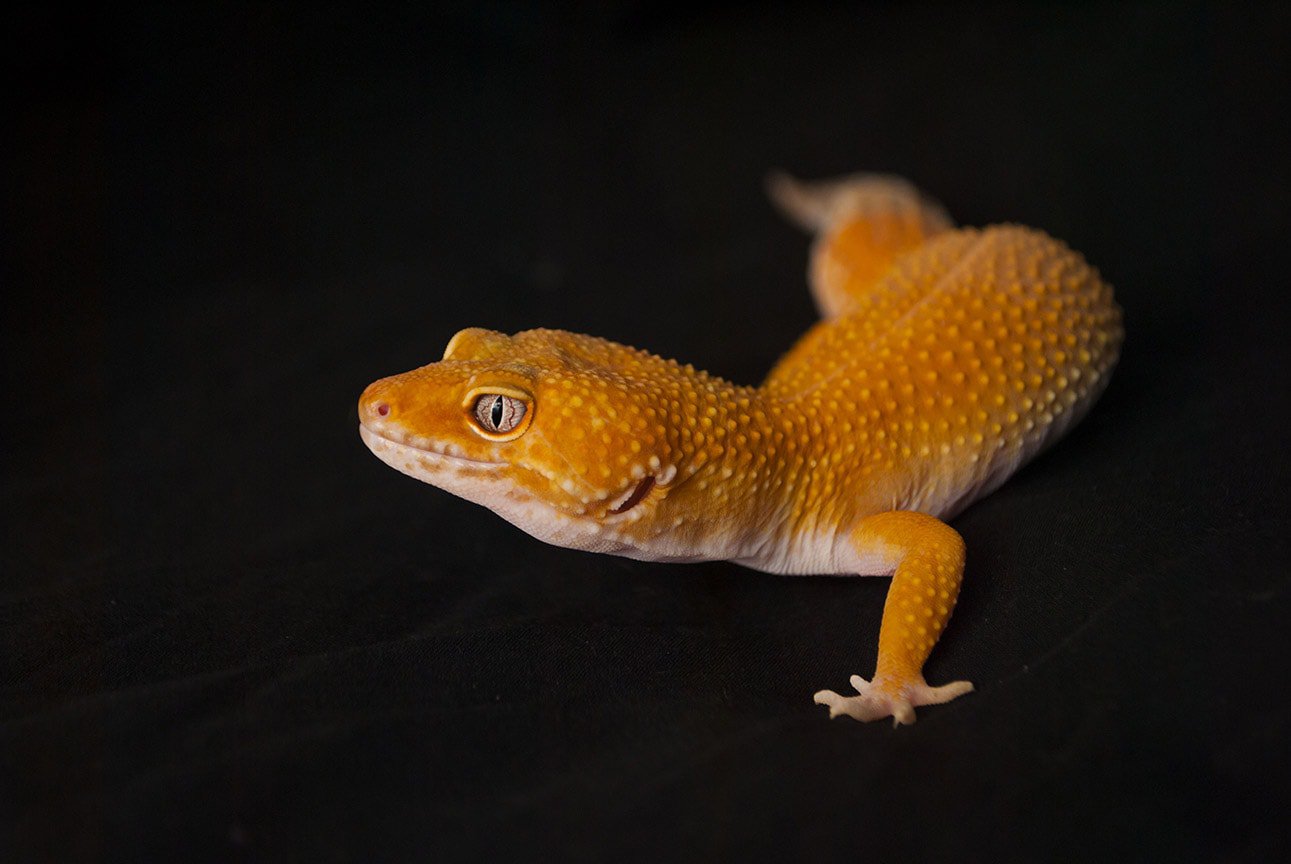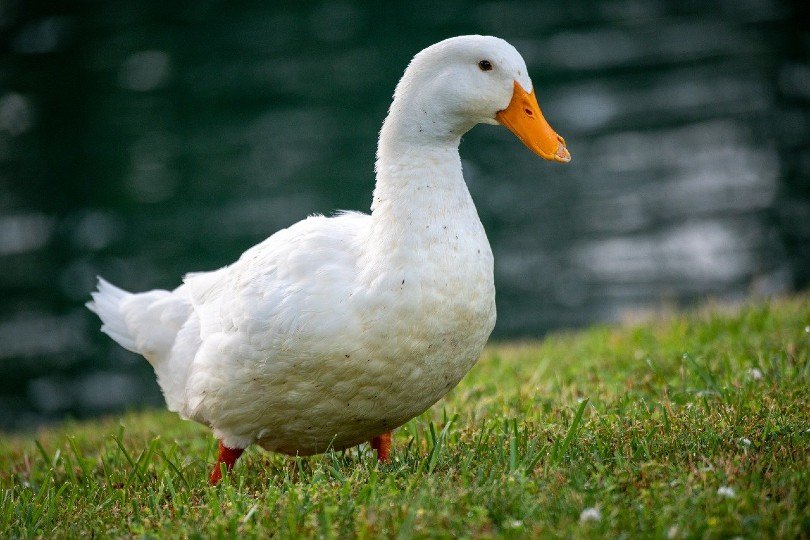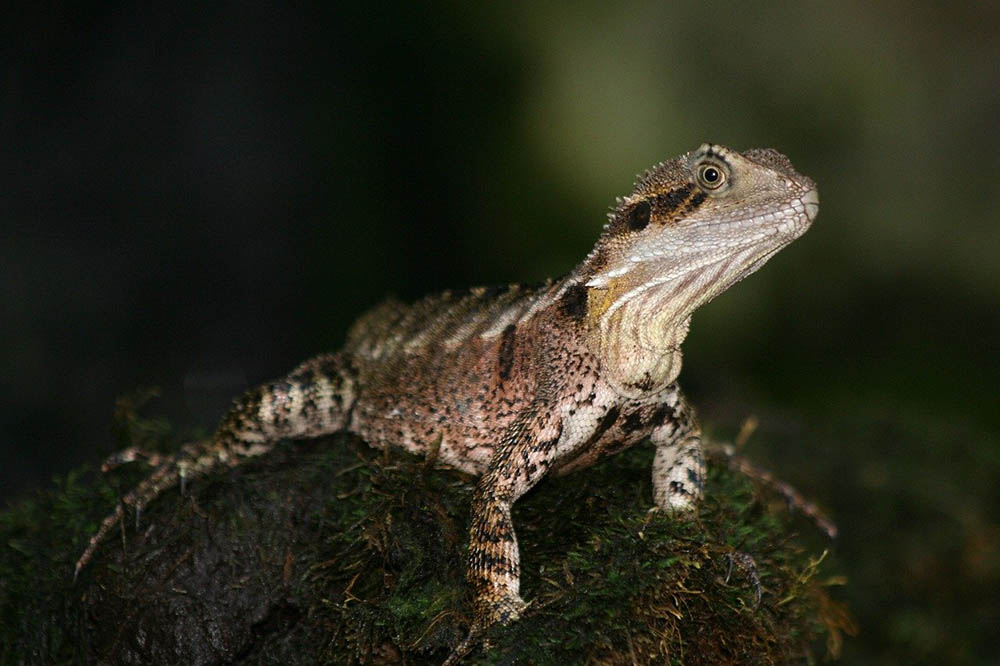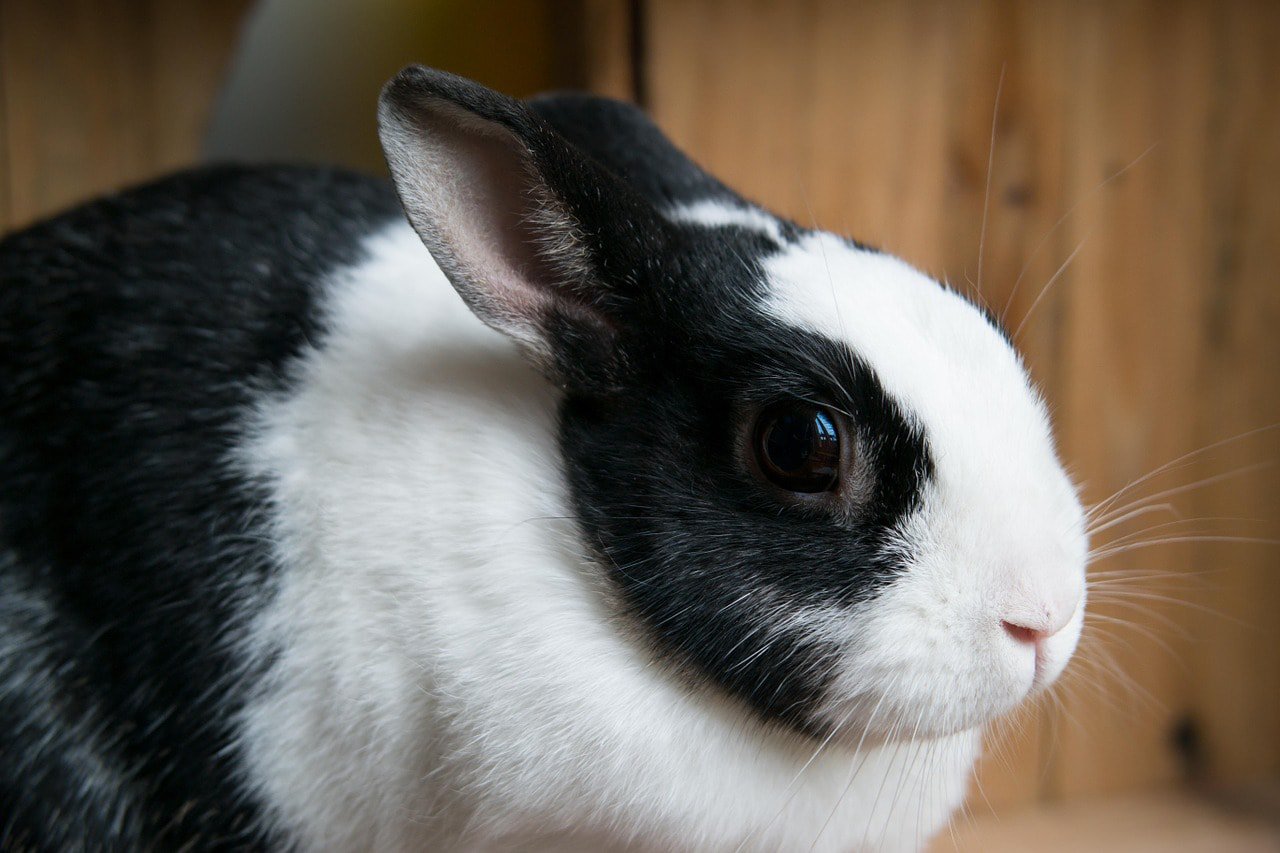Click to Skip Ahead
The leopard gecko is a popular reptile pet because it readily tolerates being handled, has easy care requirements, and is fun and intriguing to watch. Such are this gecko’s requirements that the most difficult aspects of caring for one include the regular offering of insects and ensuring an appropriate temperature in its habitat.
The sunglow leopard gecko is a melanistic morph, which means that it has a different amount of melanin than a standard morph. In this case, it is hypomelanistic, which means it has less melanin and is closer to being colorless, but in the case of this gecko, it has a bright yellow color.

Quick Facts About the Sunglow Leopard Gecko
| Species Name: | Eublepharis macularius |
| Common Name: | Sunglow Leopard Gecko |
| Care Level: | Low |
| Lifespan: | 10–20 years |
| Adult Size: | 6–8 inches |
| Diet: | Insects |
| Minimum Tank Size: | 20 gallons |
| Temperature & Humidity: | 75°–90°F temperature, 30%–40% humidity |
Do Sunglow Leopard Geckos Make Good Pets?
Leopard geckos are considered excellent pets. They tolerate and even seem to enjoy being handled, though they can be quite quick, so care does need to be taken when handling. They are also easier to care for than many other reptile species. The vibrant color of the sunglow morph makes it an even more popular choice.
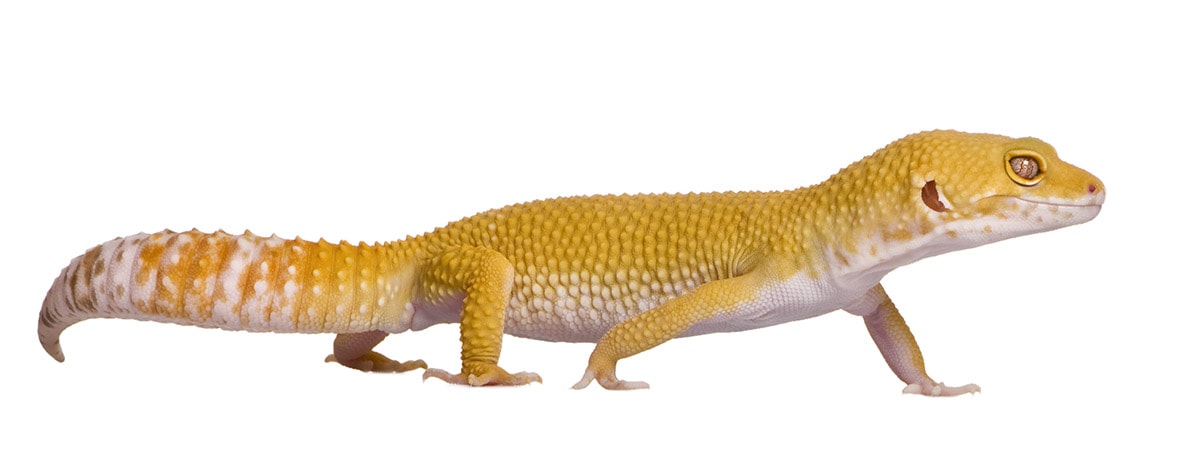
Appearance
The leopard gecko grows to a maximum of 8 inches in size. It tends to be brown or yellow with black spots, giving it its name. Unusually, this is one of the only lizards that has eyelids, and it does not have sticky toe pads like most other geckos. This means it is unable to climb walls or vertical surfaces.
The sunglow leopard gecko is one of dozens of morphs, each of which has its own unique appearance. The sunglow is a hypomelanistic morph, which means that it has less melanin in its body. It is a bright yellow color and lacks the leopard spots of most other morphs.

How to Take Care of Sunglow Leopard Geckos
Habitat, Tank Conditions & Setup
To ensure the good health of your reptile, you need to provide the following conditions and setup as a minimum.
Tank
A single gecko can live in a 10-gallon tank, but a 20-gallon tank is preferred and should be considered the minimum size for one to three geckos. The tank will need to contain at least one hide and some décor to improve the feel of the tank, and it will need to have lighting and house heating. Since a leopard gecko’s tank is smaller than that of most other lizards and the humidity requirements are not too strict, you can buy a glass terrarium. Wood is a possibility but poses more of a fire risk.
The tank and its contents will need regular cleaning. Spot-clean daily, and give everything a thorough clean every month, disinfecting items like bowls and hides, to ensure that bacteria does not grow.
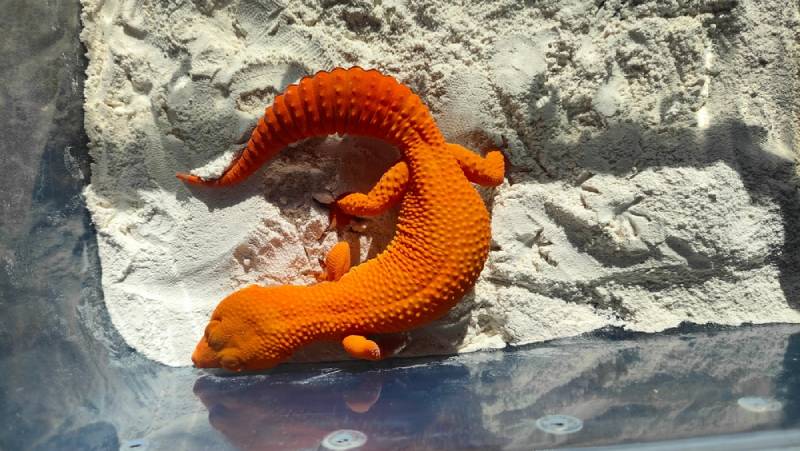
Lighting
Leopard geckos are nocturnal, which means that they are more active at night. This also means they do not have complex lighting requirements. Provide a low-wattage light that is left on 12 hours a day. You will not need a UVB basking light.
As with all reptiles, you will need to provide a temperature gradient in the tank. The cool end of the tank should be approximately 75ºF, while the hot area should be 90ºF. Humidity does not need to be measured too precisely, but the goal should be between 30% and 40% for ideal gecko conditions.
Substrate
Intestinal impaction is a concern for leopard geckos, especially when they are young. Avoid certain sands that will solidify when swallowed. Use artificial turf or pea gravel. Even newspaper will suffice. It is common for geckos to use a specific corner of the tank as a toileting area. This enables you to spot-clean just this section, making it easier to manage the substrate in the tank.
| Tank Recommendations | |
| Tank Type: | 20-gallon tank |
| Lighting: | Night light |
| Heating: | Heating pad |
| Best Substrate: | Artificial turf |

Feeding Your Sunglow Leopard Gecko
The sunglow leopard gecko is an insectivore and does not eat fruit or vegetables. You will need to provide insects like crickets and locusts, mealworms, waxworms, and superworms. Do not serve pinkies, and make sure all insects have been gut-loaded at least a day before they are fed to your reptiles. Gut loading means feeding the insects nutrient-rich food to enhance the nutritional value that they provide to your lizards.
Adult leopard geckos should be fed two or three times a week and given six or seven large crickets. They can also be given mealworms or superworms once a week as treats.
You should provide an occasional multivitamin supplement, which comes in powder form. Dust the gecko’s insects once every week or two to ensure that the gecko is getting the full range of vitamins and minerals that it requires.
| Diet Summary | |
| Fruits: | 0% of diet |
| Insects: | 100% of diet |
| Meat: | 0% of diet |
| Supplements Required: | Multivitamin dusting |
Keeping Your Sunglow Leopard Gecko Healthy
Generally, leopard geckos are healthy little reptiles. Ensure that yours has a good diet and a clean and well-looked-after habitat, and it will remain free of even the most common health issues.
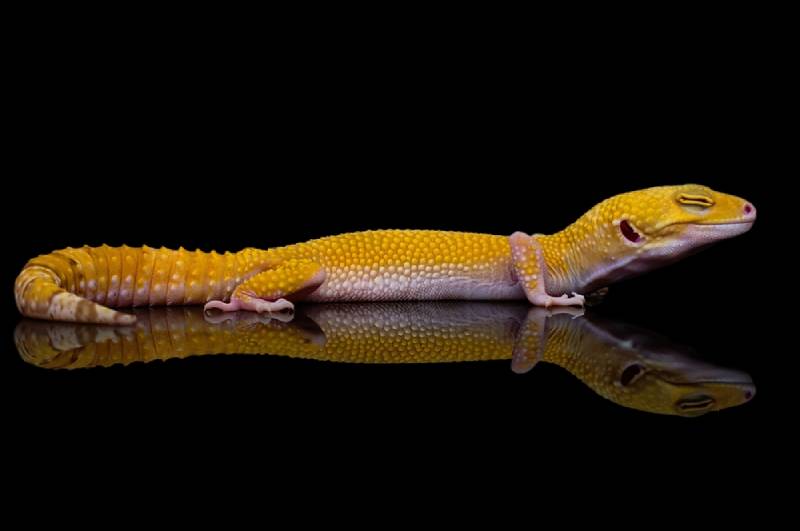
Common Health Issues
That said, the most common health issues seen in leopard geckos are:
- Metabolic Bone Disease: This is caused by a deficiency in calcium, or an inability to properly metabolize the mineral. It causes demineralization of the bones and can lead to deformities.
- Impaction: This occurs when a lizard eats substrate or another substance and it is allowed to harden in the gut. Materials like sand can set like concrete and cause problems ranging from an inability to eat to lameness.
- Parasites: Your leopard gecko should regularly have a fecal examination. This can identify parasites like helminths and cryptosporidium, which are two of the most common gecko parasites.
Lifespan
In captivity, the species usually lives between 10 and 20 years, though in rare circumstances, it can live as long as 30 years.
Breeding
In order to breed, house one male and one or two female sunglow leopard geckos in a single tank, and ensure that each gecko has its own hide. Females reach sexual maturity at approximately 18 months of age. Breeding is temperature dependent, so cool the ambient temperature down to 72°F to 75°F to encourage breeding.
Eggs are usually laid in pairs, and a female can lay between 12 and 20 pairs a year, given ideal conditions.

Are Sunglow Leopard Geckos Friendly? Our Handling Advice
Leopard geckos are relaxed and friendly; in fact, they are generally considered one of the best breeds of lizard to handle. When you first get a new leopard, give it a week to 10 days to settle into its new habitat before you try handling it. Once this time has elapsed, start with short 5-minute sessions each day, and increase this each week. Eventually, the gecko will enjoy being picked up and will like to spend time in your hand.
Shedding & Brumation: What to Expect
The gecko usually sheds in a single go, rather than in patches, and this will occur roughly every 4 to 8 weeks, depending on how quickly it’s growing. You can try raising the humidity in the tank a little when your gecko starts to shed because this will help it more easily shed its old skin.

How Much Do Sunglow Leopard Geckos Cost?
Leopard geckos start at around $50, with some of the more exotic and rarer morphs costing thousands. However, as striking as the sunglow morph is, it is quite common compared to some others. Expect to pay approximately $200 for one. If you find a sunglow that has unusual genes, such as tangerine genes, you may have to pay double, up to about $500.
Care Guide Summary
- Enjoys being handled
- Only needs a small tank
- Striking appearance
- Needs to be fed insects
- Needs taming before it enjoys being handled

Final Thoughts
The sunglow leopard gecko is a beautiful-looking, happy, mild-mannered lizard. After initial taming, which takes approximately 10 days, it will not only tolerate being handled but will also genuinely enjoy the process. The sunglow leopard is easy to care for, requires minimal space compared to most other lizards, and is not inclined to bite people, making it a highly desirable and enjoyable pet for your home.
See Also:
Featured Image Credit: Valentina Po, Shutterstock
